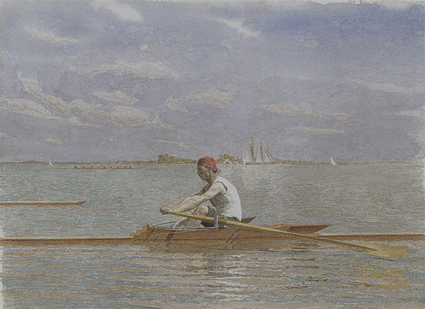Andrew Graham-Dixon on nervous clarity and painful emotion in 'Thomas Eakin' at the National Portrait Gallery
WHEN THE 29-year-old Thomas Eakins set out to paint his friend John Biglin in a Single Scull in 1873, he was not to know that he was about to create one of the most remarkable American paintings of the 19th century. The picture is modest in scale, and it is easy to be deceived by this into regarding it simply as a convincing essay in naturalism: to admire the subtlety with which the artist depicts broken reflections in water; to note the minutely careful observation brought to bear on the pale body of an oarsman at the top of his stroke; to see a pretty good likeness of a man rowing. But how much more it is than that.
To look at this picture, with hindsight, is to see the soul of American painting squeezed into the narrow dimensions of a canvas 2ft high by 11 2 ft across. It is a study in determination, one of the first images in American art of the all-American, dogged drive to get on. But it is also a study in loneliness, a picture that sees rapt absorption in a task at hand as a form of alienation from the world. Eakins paints the river and its environs as a bright and sunlit place, but one to which his oarsman seems entirely indifferent. The picture predicts the heavy melancholy of Edward Hopper's barflies or office-workers, lost in their concerns, painted some half century later. It is prescient in other ways besides.
John Biglin in a Single Scull (what an unassuming title) contains, suspended within it, the two contrary impulses of the American artistic imagination: the impulse to observe, in its clear-eyed and close-focused concentration on things (an...


